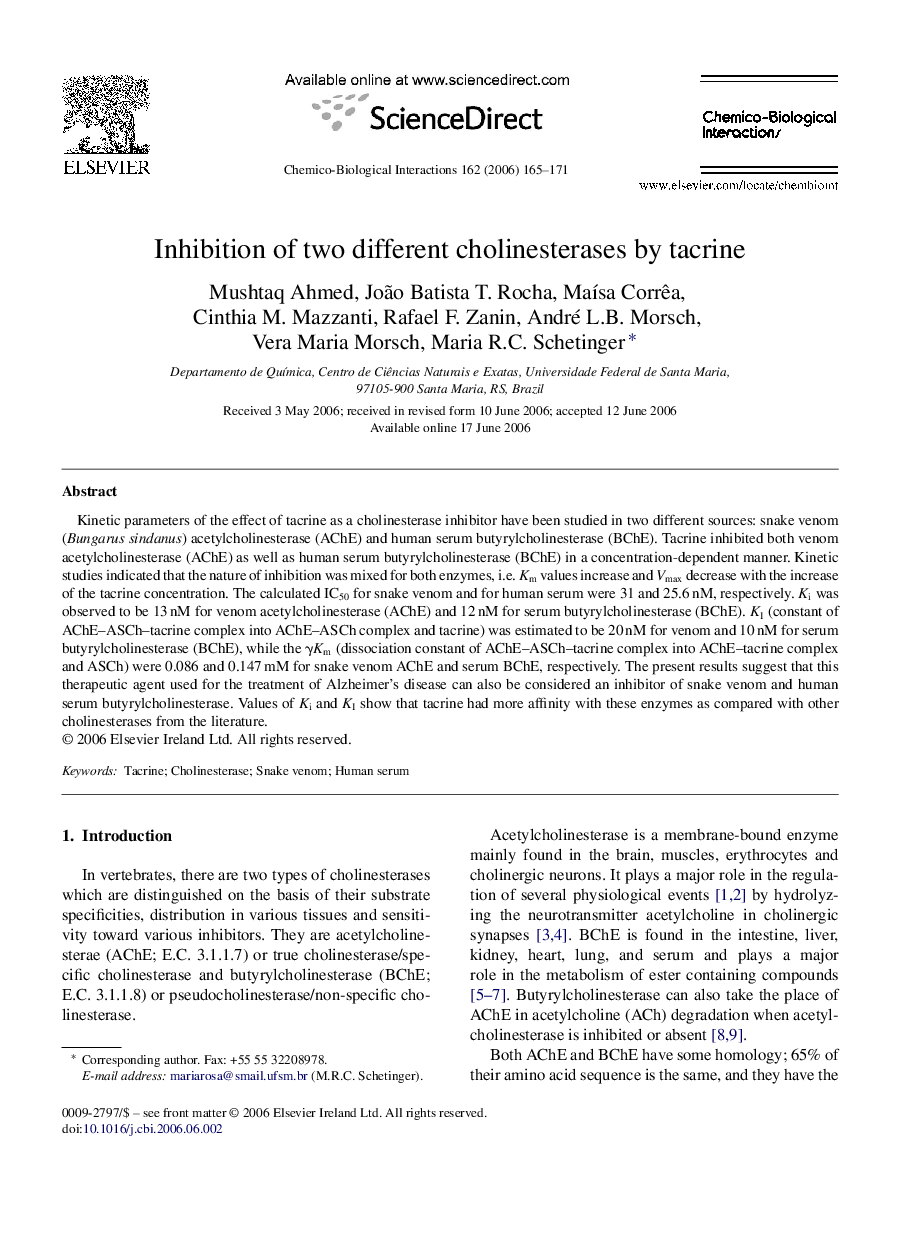| Article ID | Journal | Published Year | Pages | File Type |
|---|---|---|---|---|
| 2582492 | Chemico-Biological Interactions | 2006 | 7 Pages |
Kinetic parameters of the effect of tacrine as a cholinesterase inhibitor have been studied in two different sources: snake venom (Bungarus sindanus) acetylcholinesterase (AChE) and human serum butyrylcholinesterase (BChE). Tacrine inhibited both venom acetylcholinesterase (AChE) as well as human serum butyrylcholinesterase (BChE) in a concentration-dependent manner. Kinetic studies indicated that the nature of inhibition was mixed for both enzymes, i.e. Km values increase and Vmax decrease with the increase of the tacrine concentration. The calculated IC50 for snake venom and for human serum were 31 and 25.6 nM, respectively. Ki was observed to be 13 nM for venom acetylcholinesterase (AChE) and 12 nM for serum butyrylcholinesterase (BChE). KI (constant of AChE–ASCh–tacrine complex into AChE–ASCh complex and tacrine) was estimated to be 20 nM for venom and 10 nM for serum butyrylcholinesterase (BChE), while the γKm (dissociation constant of AChE–ASCh–tacrine complex into AChE–tacrine complex and ASCh) were 0.086 and 0.147 mM for snake venom AChE and serum BChE, respectively. The present results suggest that this therapeutic agent used for the treatment of Alzheimer's disease can also be considered an inhibitor of snake venom and human serum butyrylcholinesterase. Values of Ki and KI show that tacrine had more affinity with these enzymes as compared with other cholinesterases from the literature.
